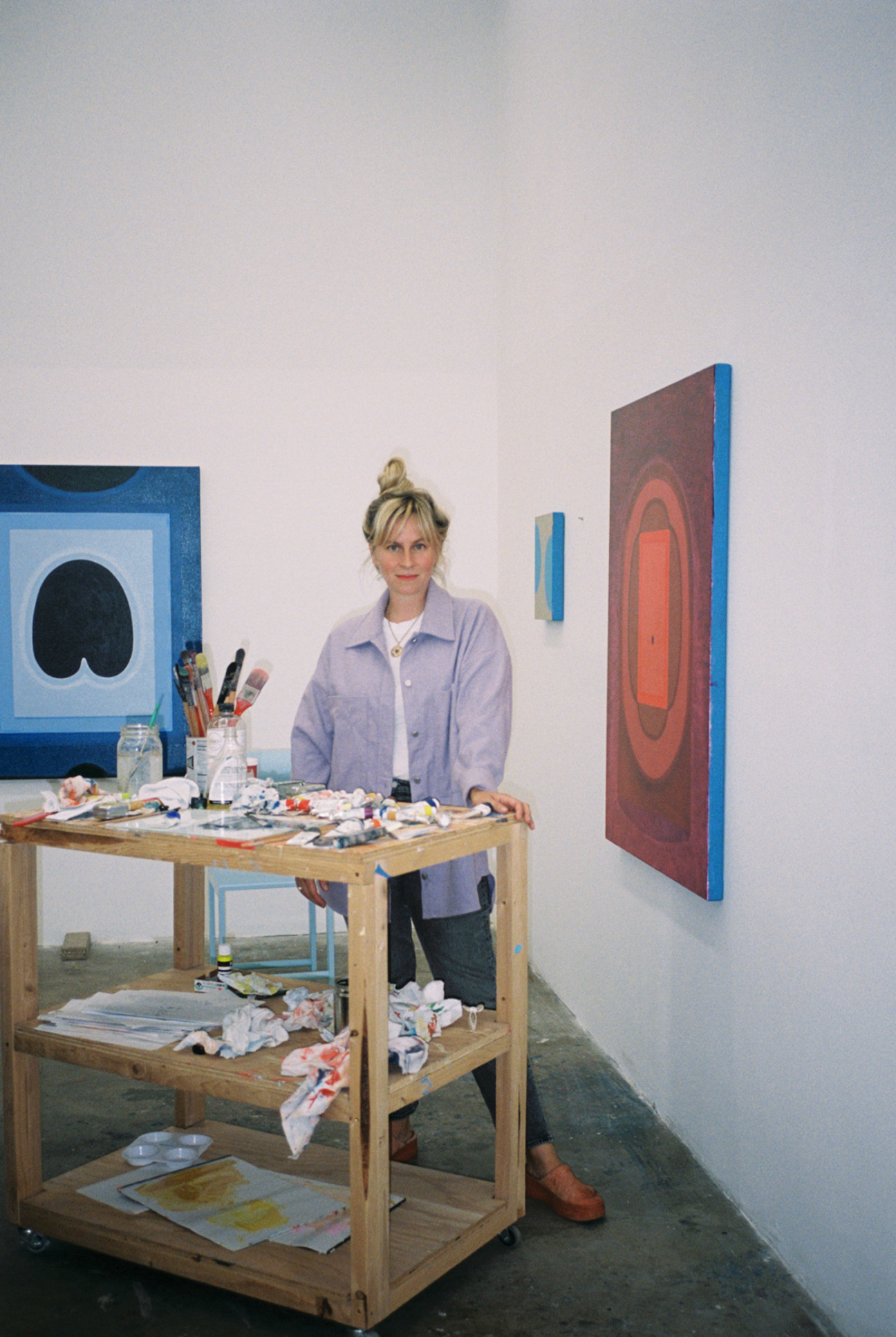
Artist Lily Stockman has spent the last year falling deeply in love. This is not a tumble-into-one-another’s-arms situation, however: It’s an internet romance.
Every night before bed, Stockman pores over photos and videos of Maison La Roche—a Le Corbusier-designed home that stands in a quiet part of Paris’s 16th Arrondissement—memorizing its contours, the light that spills through its open floorplan, the way an arced ramp transports a person silently, without percussive steps, from ground floor to first floor. “For months now, instead of doom-scrolling, I’m like, ‘Let’s see what's going on over at Maison la Roche!'” she says with a laugh.
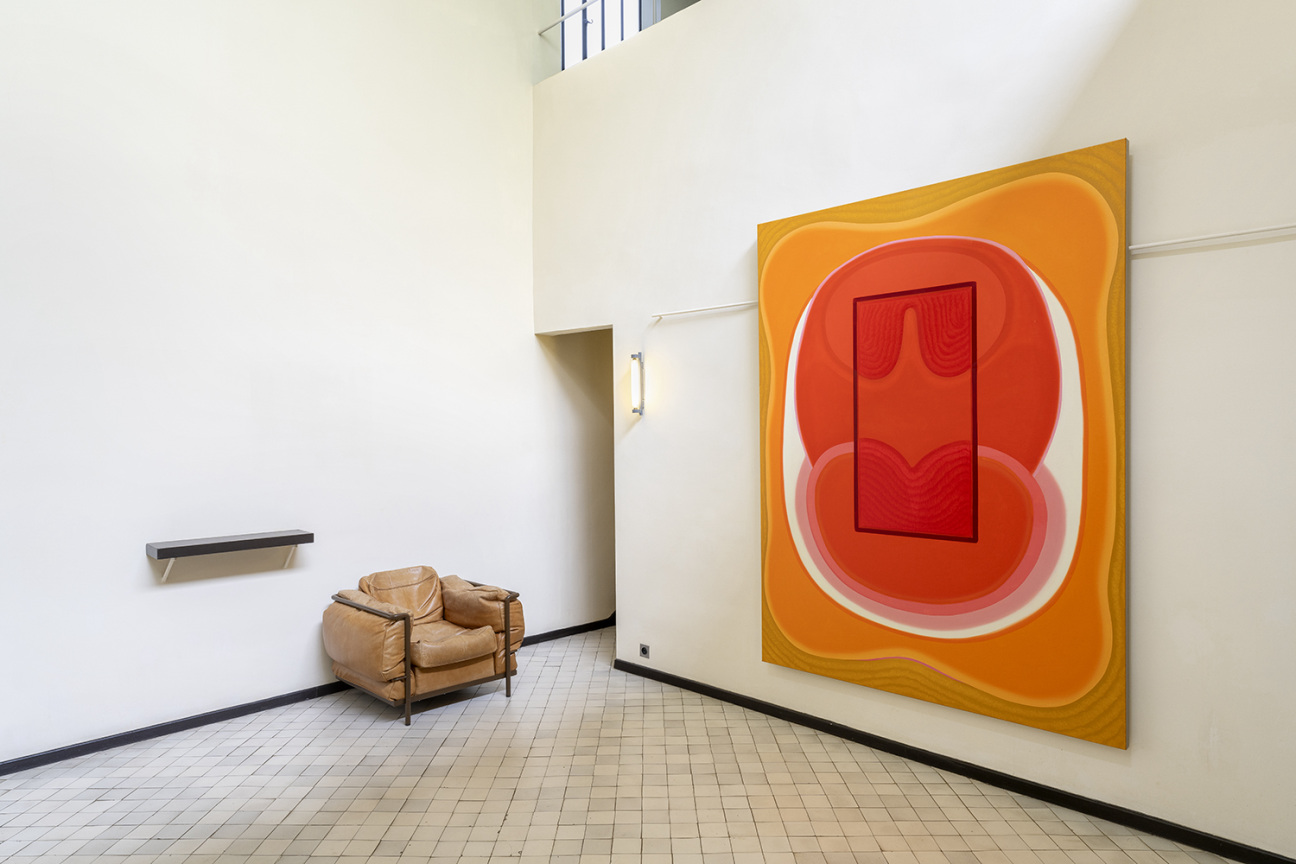
The artist, whose show “Minotaur” opens today at the UNESCO World Heritage Site, immersed herself in every resource she could find—a compendium of visitors’ Instagram stories, install shots from the handful of other contemporary artists who have shown in the space, books, and photography.
Completed in 1925, the home was designed for Raoul La Roche, a patron of Le Corbusier’s, who commissioned a space to both reflect and house his collection of purist and cubist works. Part of his series of “purist homes,” the architect created a space to embody his own evolving design ideals—geometric forms free of ornamentation, and the meticulous implementation of a tailored color palette.
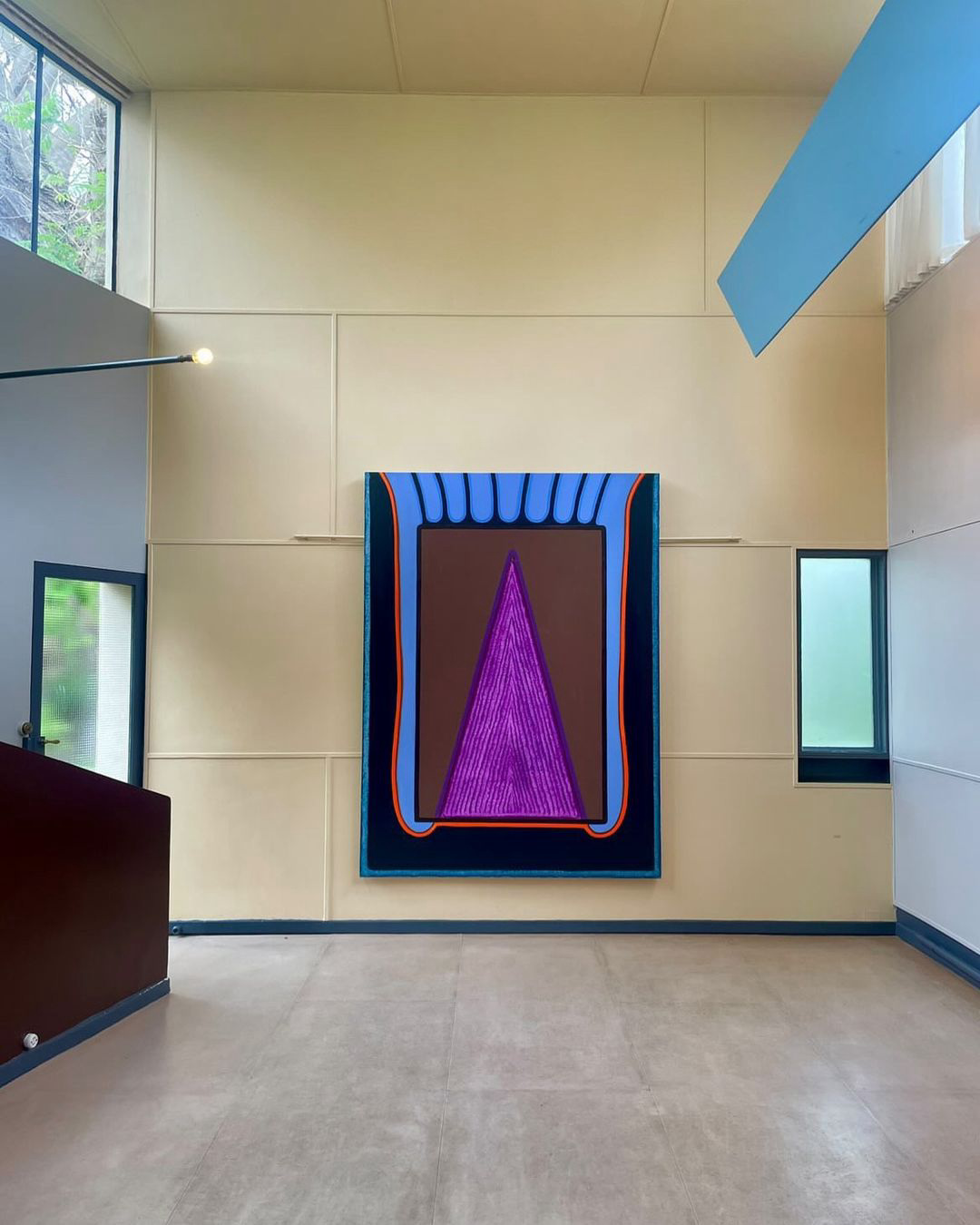
“It's the most engaged I've been with the architecture of any project I've worked on,” Stockman says. Operating within such particular constraints might have been new for the artist, but this is not the first time she’s tangled with the late French architect.
As an undergraduate studying painting at Harvard, she spent her days in the infamous and much-excoriated Carpenter Center—Le Corbusier’s only North American construction, which featured a long panel of small tiltable windows called "ondulatoires" to modulate light. “The idea was that the students could control the light,” Stockman says. “I didn’t know who Le Corbusier was as a college freshman, but I learned how to think about the formal aspects of painting through him.”
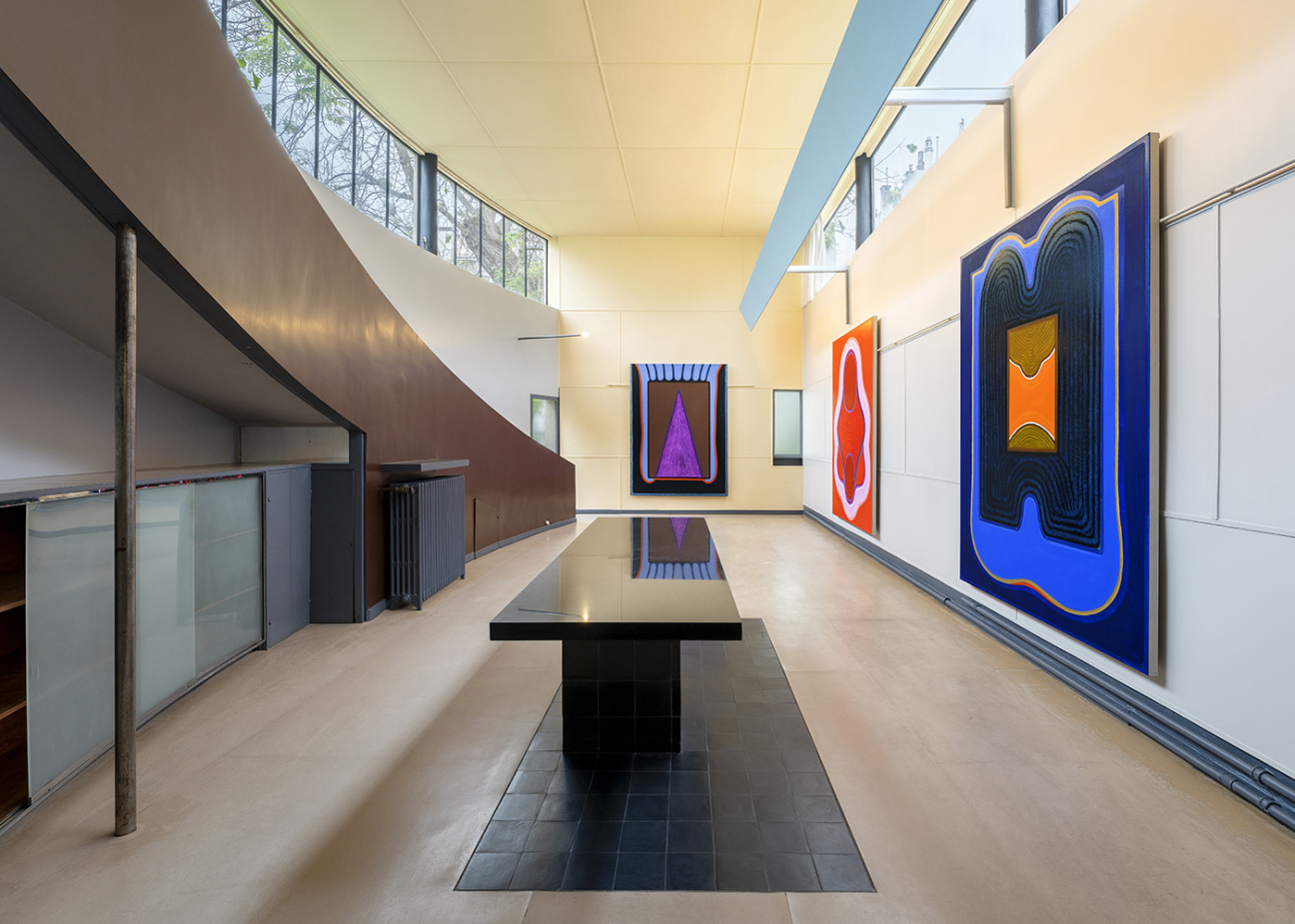
At this point, Stockman arguably knows more about Maison La Roche than many who have shown work in the space. In her studio—pristine now that the show’s 11 works have been shipped to Paris—she keeps a model of the building with a removable roof, sticky miniatures of her oil on linen paintings—ranging from small vignettes to 84 by 62 inches in size—affixed to its foam-core walls. As we speak, she rearranges the miniature works, noting offhandedly that the linden trees surrounding the house will be flowering when “Minotaur” opens to the public, sending “a wonderful, fluttering light” through its high windows.
As a body of work, the show's 11 canvases represent a few departures for Stockman. Each responds to one of the house’s unique environments—a “visual rhyme,” as the artist puts it, that mimics the formal qualities of the space (a niche, a facade, a peekaboo cutout) and each other. Metronome, for example, is named for the moment when, if Stockman’s calculations are correct, the afternoon light will sweep over the painting. It will hang at eye level on a looming two-story wall, its mouth open, “allowing the energy to flow up and out of the composition.”
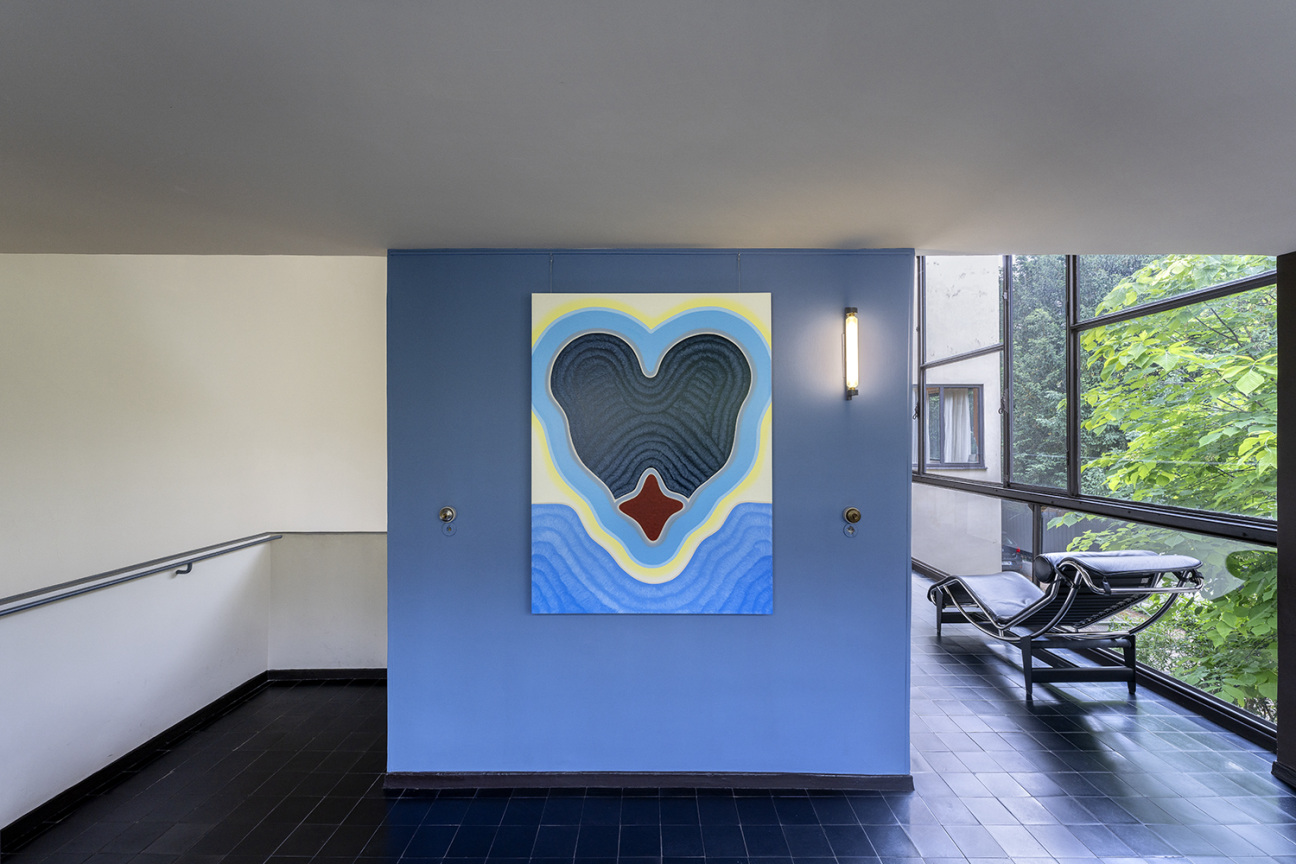
While the house provided its own dictums, Stockman found much of her inspiration for the works from Le Corbusier’s murals and offhand collages. “I was really moved by what he made toward the end of his life,” Stockman says, thumbing through print-outs of the artchitect’s tissue paper compositions and pointing out gestures she iterated on in her own works for the space. “It felt like they came from a different person than the one with this strict, dogmatic approach to architecture.“
Though the show has been long in the making, Stockman doesn’t have long to revel in the fruits of this year’s labor. She’s already starting work on her following show, which will take place in Rome next year. “It’s the biggest space I’ve ever shown in,” she says. Let the next love affair begin.










 in your life?
in your life?

